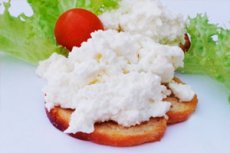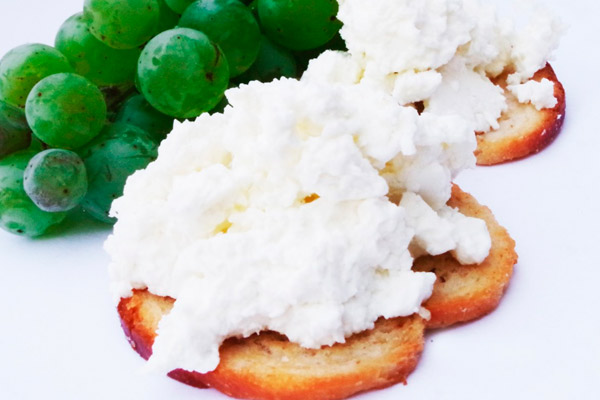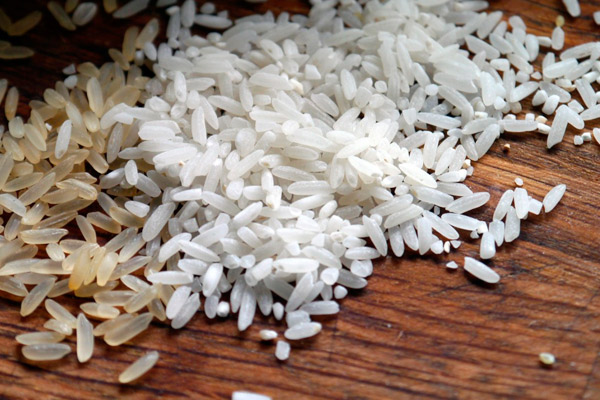
All iLive content is medically reviewed or fact checked to ensure as much factual accuracy as possible.
We have strict sourcing guidelines and only link to reputable media sites, academic research institutions and, whenever possible, medically peer reviewed studies. Note that the numbers in parentheses ([1], [2], etc.) are clickable links to these studies.
If you feel that any of our content is inaccurate, out-of-date, or otherwise questionable, please select it and press Ctrl + Enter.
Diet for osteochondrosis
Medical expert of the article
Last reviewed: 04.07.2025

We are used to changing our diet, most often, when fighting excess weight or with diseases of the digestive system. But few people know that a diet is also needed when treating osteochondrosis. A diet for osteochondrosis is prescribed, first of all, in order not to aggravate the course of the disease.
What is the diet for spinal osteochondrosis?
This diet is quite simple and does not require major dietary restrictions. The only requirement is the absence of excess weight. If there are extra pounds, the first stages of the diet should be aimed at eliminating them and bringing the weight back to normal.
Excess weight is a huge burden on the spine, and osteochondrosis in this condition only gets worse. In order to get rid of such a burden, you should create a low-calorie diet for yourself, where there will be enough protein foods, plant fiber, and complex carbohydrates (cereals, cereals). You should exclude from the menu:
- sugar, sweets;
- baked goods, white bread;
- animal fat (beef and pork fat, lard, butter, margarine, cooking fat);
- alcohol (strong and low-alcohol drinks, beer);
- carbonated water, Coca-Cola, lemonade;
- salted nuts, chips, snacks;
- fatty sausages, smoked meats.
Eat more fruit and vegetable dishes, white meat and greens. Fermented milk products are useful.
Drink enough water, about 2 liters per day. Clean water will not only help you get rid of extra pounds faster, but will also cleanse your body of toxic substances, waste and metabolic products, which is important for osteochondrosis.
Diet for cervical osteochondrosis
An important aspect of the diet for cervical osteochondrosis is the restriction of salt and sugar in the diet. When preparing all dishes, you should slightly undersalt: at first, you may not like the taste of unsalted food, but over time you will get used to it, as if it had always been that way. It is easier with sugar - it can be replaced with honey (if there is no allergy).
Strong tea and coffee are also considered undesirable products. The fact is that caffeine prevents the body from absorbing many useful and necessary substances: potassium, calcium, magnesium and sodium, which contributes to the development of problems with the musculoskeletal system. To avoid this, you need to drink weak tea, and drink chicory instead of coffee, or add milk or cream to weak coffee.
The diet for cervical osteochondrosis should provide the patient with all the necessary nutrients and valuable substances, especially minerals (potassium, magnesium) and vitamins C, P, PP, B¹, B². The menu includes complete protein (85 g per day), fats up to 40 g (mainly vegetable), and carbohydrates (complex carbohydrates up to 400 g/day).
During the diet, you need to eat 5-6 times a day. The total daily calorie intake is 2500 kcal. Products can be boiled, baked, but it is preferable to use a steamer.
 [ 1 ]
[ 1 ]
Diet for cervical osteochondrosis
Perhaps the most important thing that must be present in the daily menu for cervical and other osteochondrosis is proteins. They are found in considerable quantities in beef, pork, poultry, fish and dairy products, buckwheat, mushrooms, legumes. The listed products should be in your daily menu in the form of 2-3 servings: the rest of the place in the diet should be occupied by vegetables and fruits. Such nutrition, with an emphasis on protein and plant components, can be safely used in the prevention of osteochondrosis.

We have already talked about the benefits of vitamins and microelements for spinal diseases. But many may have a logical question: why change your usual diet if you can simply take some complex drug containing all the vitamins. Moreover, the pharmaceutical network now offers many such drugs, and some of them are even recommended specifically for diseases of the musculoskeletal system.
Of course, you can do this. But you also need to take into account that synthetic vitamins are perceived by our body much worse than natural ones, so their benefits are insufficient. In addition, without changing our diet and lifestyle, we continue to aggravate the condition of the spine: with excess weight, salty food, processed foods, and impaired metabolism. That is, our disease remains, and we are only trying to "sweeten" it a little with pills.
By changing our diet, we eliminate bad eating habits that have had a detrimental effect on our organs and musculoskeletal system for many years. We stop pathological processes in the spine, gradually eliminating damage and restoring tissue.
By limiting your diet from harmful sweets, baked goods, and excess salt, a person will soon feel much better, since improvements will occur not only in the spine, but also in the body as a whole.
Diet for lumbar osteochondrosis
The most important nutritional element for osteochondrosis, as well as for some other diseases of the spinal column, is calcium.
What foods contain this element and what are the norms for its consumption?
- Children – from 600 to 1000 mg.
- Adolescence – 1200 mg.
- Adults from 16 to 45 years old – 1000-1200 mg.
- Pregnant women and the elderly – from 1400 to 2000 mg.
How much calcium can be contained in food products?
- a glass of milk or kefir – 220-240 mg;
- a piece of hard cheese (about 10 g) – 103 mg;
- a piece of feta cheese (approx. 10 g) – 50 mg;
- store-bought yogurt (half a glass) – 80 mg;
- natural cottage cheese (100 g) – 150 mg;
- fish products (100 g) – 50 mg;
- boiled egg (pcs.) – 55 mg;
- boiled beans (100 g) – 120 mg;
- oatmeal (100 g) – 65 mg;
- nuts (100 g) – 260 mg.
To compensate for the loss of calcium, you need to eat at least two servings of dairy products daily, and include legumes in your menu. Start your morning with oatmeal or other porridge (you can add nuts to it), or with egg dishes. Snack on fruit, cottage cheese, and nuts. For lunch, instead of pasta, you can cook vegetables (stewed, poached, or mashed), and don't forget about salads.
End your day with a glass of kefir or fermented baked milk.
Such simple ways of changing your diet are not burdensome, but they will help improve metabolic processes in your body, and your spine will feel lighter.
Yes, and add natural joint-protective dishes to the menu: jelly and aspic. These dishes contain natural collagen, which is essential for our cartilage and tendons. Lack of collagen leads to loss of tissue elasticity, including cartilage tissue, both in the joints and in the spine.
 [ 4 ]
[ 4 ]
Rice diet for osteochondrosis
One of the most popular diets for osteochondrosis is the rice diet. Of course, it is quite strict, but no less effective. According to those who have already tried this diet, the rice diet helps rid the body of excess salts and even remove extra pounds, which is also important for osteochondrosis.

The duration of the rice diet for osteochondrosis is 42 days.
Take 6 empty 0.5 l jars, number them in order (you can stick stickers on them), and put 2 tbsp of raw rice in each jar. Then add water to all the jars and cover with gauze napkins.
Exactly 24 hours later, pour out the water from jar #1. Transfer the rice to a ladle, pour boiling water over it and boil for 5-8 minutes. Do not add anything to the rice! The cooked rice must be eaten. After such a breakfast, you cannot consume any food or water for 4 hours.
After this, we fill jar #1 again with rice and water and place it next to jar #6. The next day, we do the same procedure with jar #2, and then follow the logical pattern.
A rice diet for osteochondrosis can affect kidney function, so along with eating rice, it is recommended to drink tea made from lingonberry leaves.
If for some reason the diet does not suit you, you can stop it at any time.
 [ 5 ]
[ 5 ]
Diet recipes for osteochondrosis
Bean pseudo-mayonnaise (an excellent substitute for mayonnaise).
We will need: 1 can of beans, 300 ml of refined oil, 1 teaspoon of prepared mustard, half a teaspoon of sugar, the same amount of salt, 2 tablespoons of lemon juice.
Drain the water from the jar of beans, puree the beans, add oil, and beat. Then add the remaining ingredients and beat a little more. The "mayonnaise" is ready.
 [ 6 ]
[ 6 ]
Jelly dessert "bird's milk"
We will need: 2 tablespoons cocoa powder, 1 cup granulated sugar, a little vanillin, two egg yolks, 200 g jam, 0.5 l sour cream, 3 tablespoons gelatin, 3 cups water, juice from half a lemon.
Pour gelatin into cold water in three separate glasses, 1 tablespoon each, and wait until it swells. Then heat it slightly.
Beat the yolks with sugar until white peaks form. Add lemon juice, vanilla and mix. Add a glass of sour cream and the first glass of gelatin to the mixture and mix. Pour into a mold and put in the refrigerator to set.
Prepare the second layer. Mix another glass of sour cream with 2 tbsp. sugar. Add warm jam to the sour cream, stir and add the second glass of gelatin. Stir again.
We take the already cooled first layer out of the refrigerator and pour the second one on it. We put it back in the refrigerator.
For the third layer, add half a glass of sugar and cocoa powder to the remaining sour cream. Mix, add the third glass of gelatin, mix again and pour onto the previous 2 layers. Place in the refrigerator until completely solidified.
Curd pudding
We will need: 220-240 g of cottage cheese, 40 g of semolina, about 100 ml of boiling water, 2 eggs, 70 g of granulated sugar, 40 g of melted butter, the same amount of raisins, vanilla sugar, a spoonful of sour cream and refined oil, as well as breading, a little powdered sugar and salt.
Pour boiling water over the semolina and leave it under the lid. Meanwhile, separate the yolks and beat with sugar until white. Add the yolk-sugar mixture to the cottage cheese, mix, then add vanilla sugar, melted butter, raisins and swollen semolina.
Beat the egg whites separately with a few crystals of salt until white peaks form. Carefully add to the dough. Place in molds, greased with butter and sprinkled with breadcrumbs (you can also use one large mold). Grease the top with sour cream (for the crust).
Bake for about half an hour at 220° C. After cooling, remove from the pan and sprinkle with powdered sugar if desired.
 [ 7 ]
[ 7 ]
Diet menu for osteochondrosis
The diet menu for osteochondrosis should be low-calorie, balanced, with an enriched vitamin and mineral composition. It is advisable to eat food cooked in a steamer about 6 times a day and in small portions.
What products should be included in the menu without fail:
- dairy products (whole milk and fermented milk products);
- vegetable dishes, greens. Particular emphasis should be placed on cabbage, cucumbers, radishes, celery, beets;
- fruit and berry dishes, including jelly and compotes;
- vegetable oils;
- lean meat;
- jellied dishes, aspic;
- dark breads, dry biscuits, muffins;
- eggs;
- nuts, seeds, sesame seeds;
- cereals;
- seafood (fish, shrimp, seaweed, mussels);
- still water.
An approximate diet menu for osteochondrosis may look like this:
- Breakfast. Curd cheesecake, syrniki or just cottage cheese with sour cream and fruit, rosehip tea.
- Snack. A few ripe fruits, or a handful of mixed nuts, or a couple of dried fruits.
- Lunch. Vegetable soup, maybe bean or pea, a piece of steamed meat, vegetable salad, compote.
- Afternoon snack. A cup of sour milk with a muffin or biscuits, or a fruit mix with yoghurt topping.
- Dinner. Boiled fish fillet with cereal garnish, or chicken with tomato and cucumber salad, weak tea.
Before going to bed, you should definitely drink a glass of kefir or fermented baked milk.

